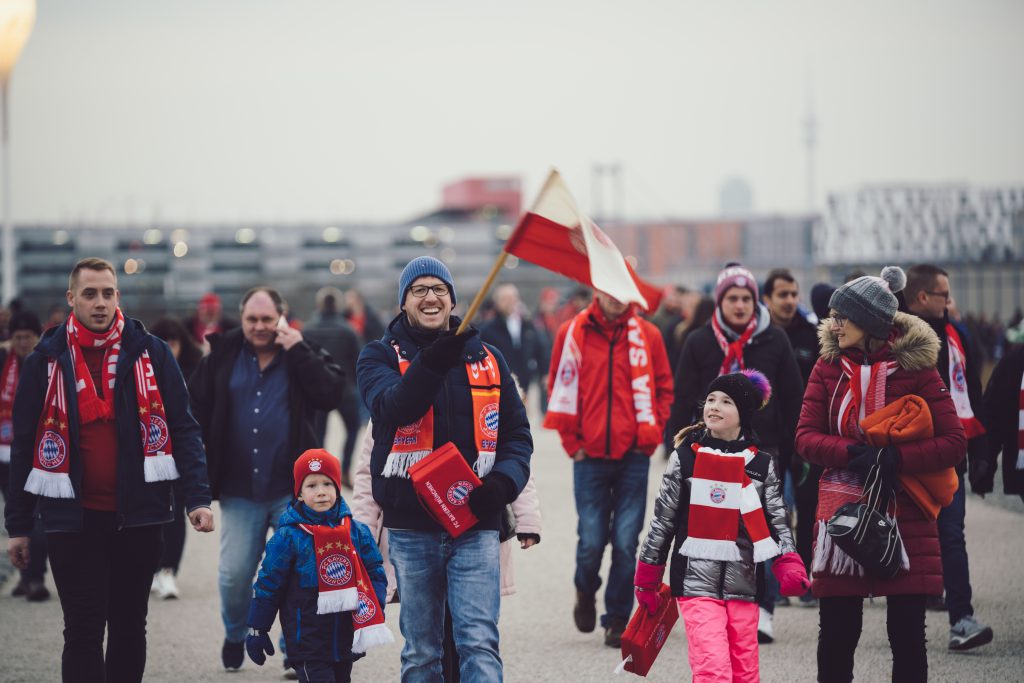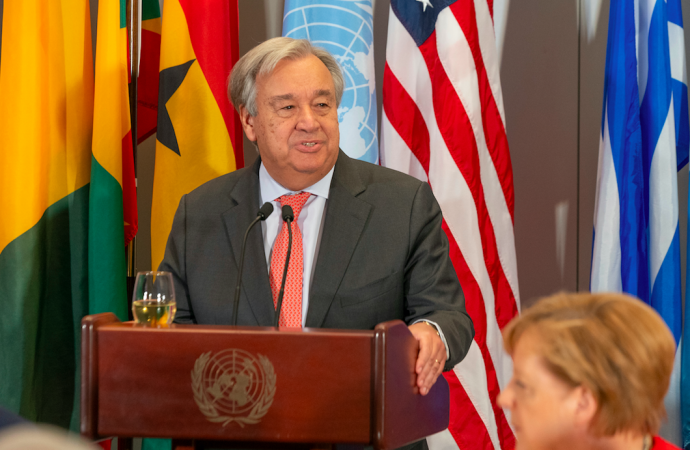Well thought out fan engagement campaigns and experience-led commercial partnerships can drive new norms and change behaviours, says Aileen McManamon
“What I hear, I forget. What I see, I remember. What I do, I understand.” – Xunzi (340 – 245 BC)
This quote is often attributed to the iconic Chinese philosopher Confucius, but a little fact-checking indicates that this well-known proverb was actually formed by one of his disciples, Xunzi. As well as setting the record straight, I want to use this piece of ancient text to address the confusion most individuals have about their role – and potential impact – on climate change.
Some take personal action (great job with all those refillable water bottles, truly) but can fall into what is termed ‘single action bias’ – “I’ve done my bit. What else am I supposed to do?” – while others are so overwhelmed by the enormity of the problem they fall into a paralysis of non-action.
But action is exactly what we need.
In September 2019, the UN secretary general Antonio Guterres (main image) called on all sectors of society to mobilise for a ‘Decade of Action’, accelerating sustainable solutions to all the world’s biggest challenges on three levels: global action, local action and people action.
Larger entities such as governments, multinational corporations and international NGOs are the global action drivers. Local action is underway in many places where cities are drafting plans to address the climate emergency.
But how to move the masses on personal behavior? The industry that can grab the attention of one billion people at a time seems like a terrific place to start. Sports teams are often seen as an embodiment of a citizenry and a proxy for a city or region, enabling them the opportunity and occasion to step in as a convener and catalyst for action.
But are the masses ready for action? It appears so.
Because we are experiencing it. We’ve heard about it since the publication of Silent Spring 60 years ago. We’ve seen it through calving glaciers in ‘An Inconvenient Truth’ and the now iconic plastic bag iceberg cover on National Geographic. But what got us in motion, six million strong marching through the streets? Experiencing it – through floods, wildfires and drought. Personally feeling it. On every continent.
We are hitting the streets. We are shifting our investments. We are pressing our employers.
Cliché Come to Life
A few weeks back a Sustainability Report poll indicated 100% of fans said they’d be more inclined to follow a sports team if they demonstrated social and environmental responsibility. And I tweeted, tongue-in-cheek, that being sports, I’d expect that number to be 110%. A lot of us find the athlete’s 110% cliché funny every time we hear it. But it is possible to go beyond the ‘limits’ of capacity. And there is definitely a way for the sport industry to do this on climate change. By exerting their influence and spurring fans into collective action, they have the power to move the needle entirely off the gauge in terms of action.
This happens when we make a conscious move beyond the climate campaigns we have seen so far in sport, which have been largely awareness- and education-based, and create new habits as part of the gameday ritual and novel forms of fandom.
The medium of sports is not school. It is entertainment and joy and passion and full of live action that brings our heart rate up even though we aren’t physically playing the sport we’re watching. As ‘spectators’, we jump, we slump, we hug, we console. When the effort seems futile and the day is lost, we rise again, and we return to fight another day. We are even routinely acknowledged by the athletes for our support in creating a home field advantage, or spurring their best effort through our encouragement. The most avid fans already see themselves as an integral part of their team and of course ‘suit up’ each week in replica jerseys.
Getting Fans in the Game
We all know teams can get fans to do practically anything to show their loyalty. But the ‘people action’ component of climate action requires lifestyle changes. Or put more positively, new habits. And that’s a tall order.
How can a sport team possibly influence that?
Many elements define a team and its supporters – team colors, symbols, ‘battle cries’ and songs. Gameday rituals that call for fans’ physical participation are part of this as well. Like many football (soccer) teams’ ‘March to the Match’ where fans gather a short way from the stadium and walk the last stretch in unison. We revel in the sense of belonging and draw self-esteem and a sense of shared identity from our affiliation with the group. So much so that we sometimes subvert our individual identity in adhering to the group norms.

Introducing a sustainable behavior (such as skipping the car or opting for a meatless meal) as a team initiative can spark individuals to try out something they might not otherwise consider doing. Because the group is doing it. And the ‘doing’ is key. From Xunzi to Plato, Thomas Hobbes to Montessori and hundreds of scholars on learning, it has been routinely established that we learn best by ‘doing’, by trial and error, through practical experience.
Let’s say your team urges you to go ‘car free’ for a day by making a contest of it by prompting you to post a picture of yourself on transit. You enter, as you are enticed by the reward: winners will appear on the screen during the game and be congratulated on social media. Not hard to imagine that being successful. Who wouldn’t take a stab at that to earn those bragging rights? Likely most fans would. Once.
By trying something once rarely turns to habit. You need a cycle of reinforcement and reward to establish a new habit. So, it’s key that teams take up this role as they approach their own ‘business’.
A game isn’t won by a single shot on goal. It’s an orchestrated set of plays. In fact, the action doesn’t stop from opening to the final whistle. And a championship isn’t won with a single game victory.
What if the team prompted its fans to go ‘car free’ once a week, with extra points awarded for gameday (attending match or not), double extra points for getting to away games on transit, triple points for walking or cycling and offered a host of other personal and team-based challenges with a weekly leaderboard? Suddenly, it’s game-on. Fans are ‘doing’, experiencing and understanding. Together.
New norms are developed (“What sort of fan drives to the match?!?”). New rituals become part of the shared identity. Personal and collective action is underway moving the needle to 200, 300 or even 500%.
Timing is Everything
Coincidentally, another shift toward action is happening in marketing – in marketing budgets in particular. Top consumer brands have been steadily and significantly increasing their budget allocation to experiential (live, on-site) and digital campaigns at the expense of traditional advertising. While print, radio and television are necessary to reach a brand’s broad consumer base, it has been relegated to a supporting role in the marketing mix. Partly because they know we are in a barrage of visual and aural stimulation which makes it harder for those messages to stand out and to stay with us, but largely as digital is infinitely more precise and measurable. Experiential marketing is more expensive and arguably less measurable than digital – so why spend more here?
Look to the rising preference for ‘experiences’ over things. Especially among the coveted young adult audience (Millennials and Gen Z). These drivers of the ‘sharing economy’ business model have replaced products with services: (cars through rideshare, music and other entertainment via streaming and even leasing clothing) and are less inclined to believe what they see and hear, but will take as truth what a brand makes them ‘feel’.
The result is a very strong move by the most innovative consumer brands to present ‘action-oriented options’ as they increasingly roll out purpose-driven campaigns that don’t just speak about their cause-related efforts and donations, but invite the consumer in to be a part of the effort, from buy one-give-one models (Tom’s Shoes) to more intensive citizen action mobilisation (CoronaXParley Global Beach Clean-Up).
Sport sponsorship has always been the favored (but often demanding) child in the marketing budget. To retain that place the industry will need to put forward the innovative, purposeful and measurable marketing assets companies now require.
No Final Whistle in Fandom
Fans follow their teams, year in, year out. Campaign after campaign. We stay. We fight. We win. We celebrate. We come back again tomorrow.
The shared experience, dogged determination, and eternal optimism sport gives us will help us adopt the new playbook we need for the 21st century.
The time is now – right now – for teams to take up the leadership mantle for the masses in the Decade of Action.
We are suited up and ready for action. Put us in, coach.










Leave a Comment
Your email address will not be published. Required fields are marked with *